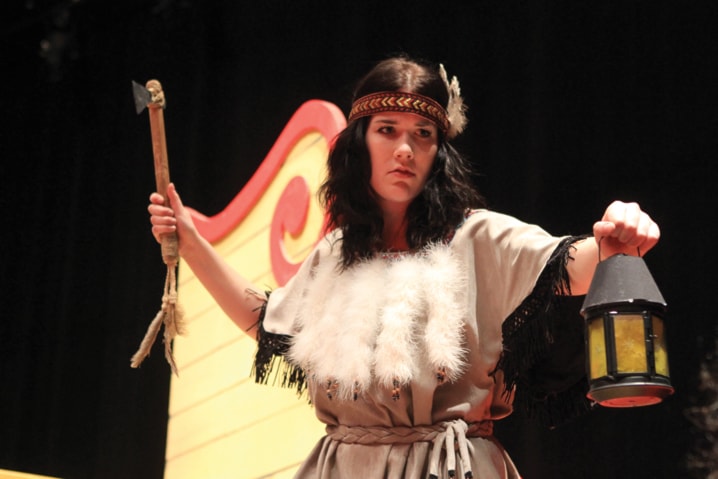The boy who refuses to grow up will soon take Wendy and her brothers on an imaginative flight to Neverland, soaring high above the Red Deer College Arts Centre stage.
Young actors from the RDC Theatre Studies’ version of Peter Pan will be “flying,” thanks to a Chicago theatrical stunt company that’s going to make the magic happen — with or without pixie dust.
“Believing is a big part of this story,” said director Thomas Usher, who is tasked with making audience members accept the show’s pirates, mermaids, lost boys, Indians — and, of course, one ticking crocodile — when the play opens on Thursday, Nov. 22.
Peter Pan, written for the stage in 1904, and then as the novel Peter and Wendy in 1911, has endured more than a century of popularity with children and adults. The fanciful story has survived Disney-fication, the Hollywood Steven Spielberg treatment (with a middle-aged Robin Williams in the starring role), and a long-running Broadway musical in which Mary Martin played the boy who never ages well into her late 40s.
Usher believes J.M. Barrie’s story is durable because of its delicate subtext: Wendy, at age 13 or 14, is on the brink of young womanhood and “falls for this mysterious character. . . .
“It’s sweet. Wendy gives him a kiss and really likes him, but he doesn’t want that. Peter Pan doesn’t want to grow up. . . .
“He can’t keep her as his mother, and she can’t have him as something more than a mother,” said Usher, who believes this inner impossibility “brings a bitter-sweetness to the whole tale.”
Like Winnie the Pooh and Mary Poppins, Peter Pan is a product of the Edwardian era and its idealization of childhood. Usher believes the brief period spent in the nursery before boarding school became precious to authors such as Barrie and A.A. Milne, who made succeeding generations also long for their lost innocence.
In keeping with tradition (in the Edwardian era, young actors couldn’t work past 8 p.m. so small women were cast in children’s roles) Peter Pan will be played by a female in this 19-actor production that includes some RDC theatre alumni.
Another actor will play both Mr. Darling, father to Wendy, John and Michael, and the play’s other authority figure — Captain Hook, Peter’s pirate nemesis.
The roles of Mrs. Darling and the plucky kidnapped Indian princess, Tiger Lily, will similarly be played by a single actor.
Usher said this is also traditional, since the dual characters share the same mannerisms, giving the play a dream-like quality — as if the children are associating fantastical Neverland types with familiar people from their real lives.
The dream theme will be strengthened by set designer Colin Winslow, who has a British background and has designed for several other Peter Pan productions.
In this case, Winslow has designed a gabled nursery, complete with dog house for the Darling’s dog Nana (how the dog is portrayed will be a surprise, said Usher). The nursery contains all the elements that the Darling children will later find in Neverland — from the toy pirate ship on the bookshelf to the mermaids and Indians in the wallpaper pattern.
Now about those Indians. . . . The stereotypical Neverland “red-skins,” with their feathered head-dresses, tomahawks and dance around the campfire are probably the only controversial thing about Peter Pan.
“They are stock characters from stories that might live in a child’s imagination,” said Usher. “The kind of Indians that kids pretend to be when they’re playing cowboys and Indians.”
All the same, he noted the young RDC actors would cast an uncomfortable glance at a fellow cast member, who is part aboriginal, whenever the Indian scenes were rehearsed, as if to acknowledge “This isn’t really politically correct.”
But in Barrie’s defence, do his imaginary Indians have to be any less fantastical than his Tinkerbell fairy or his mermaids?
While the author exhibited the typical European attitude towards natives when he wrote the play more than 100 years ago, Usher said he later stressed the fictional nature of his depiction. “Barrie said, ‘These aren’t the Hurons or the Delawares. These are the Piccanninnies.’ ”
lmichelin@www.reddeeradvocate.com
